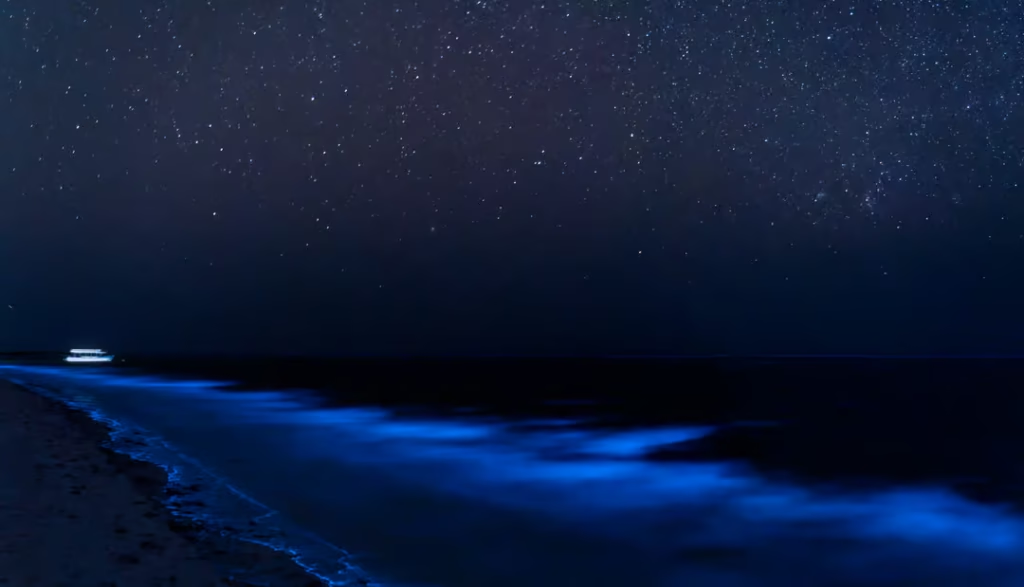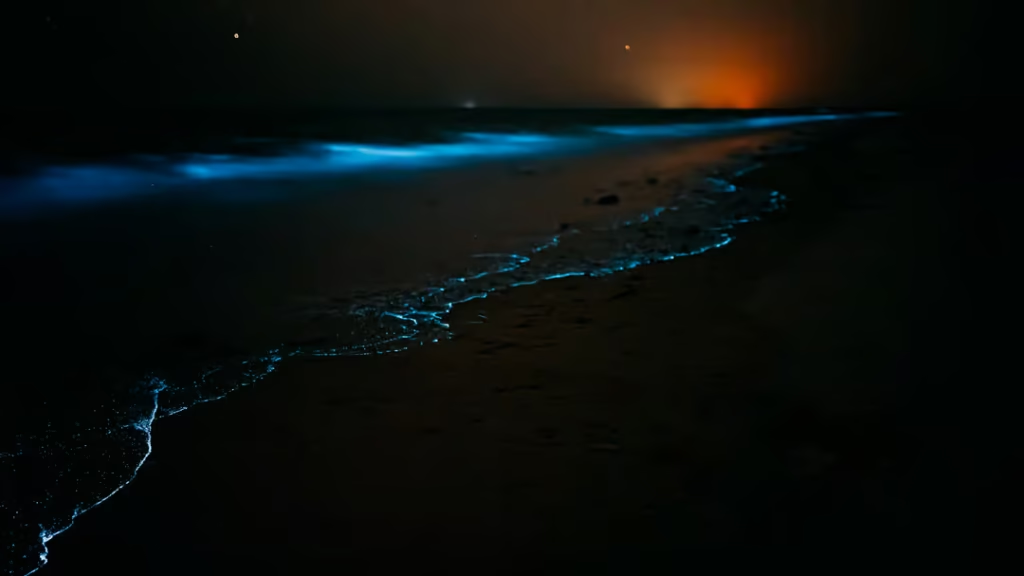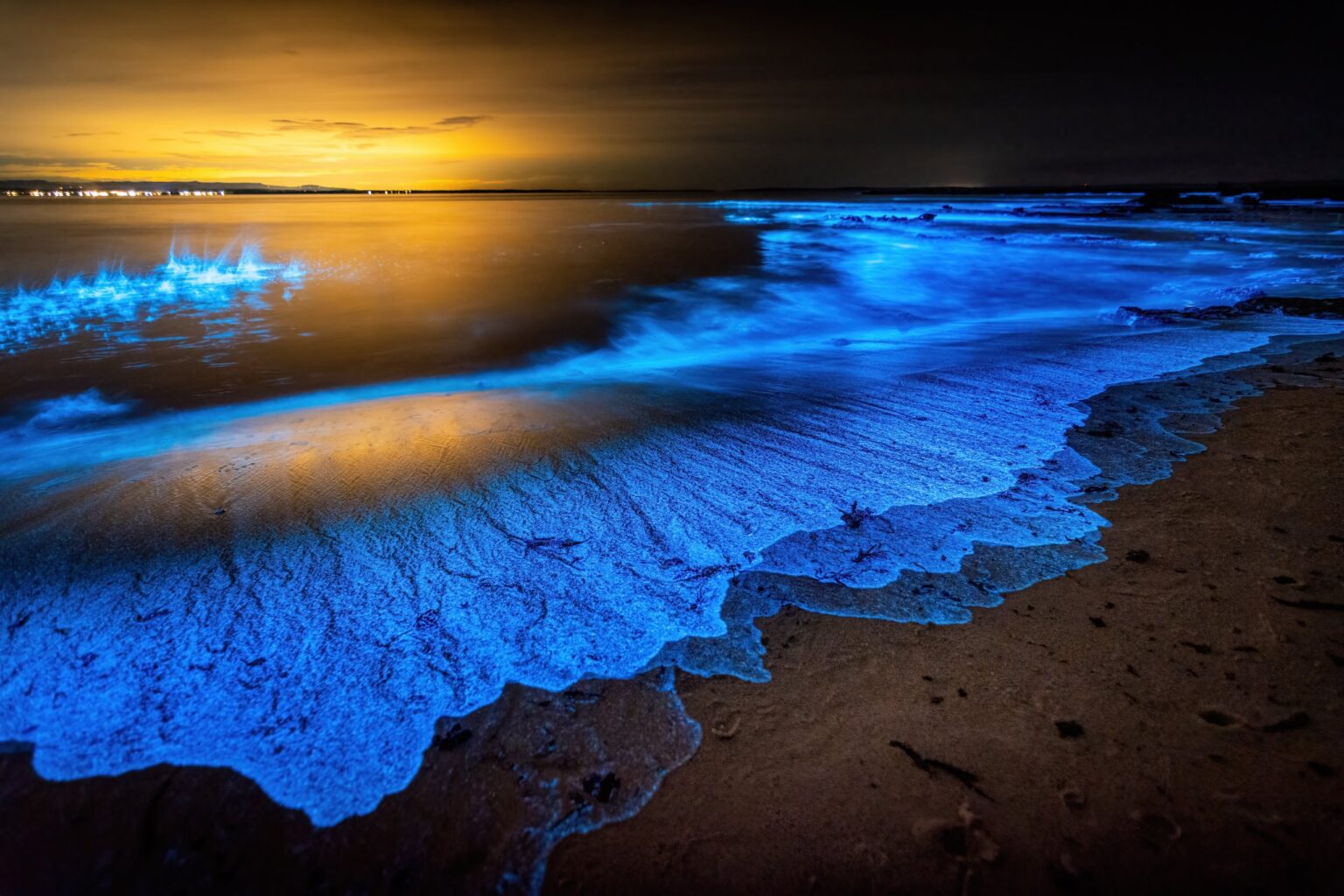Imagine walking along the beach at night and seeing the waves glow a magical blue. It sounds like something from a fairy tale, but this is a real phenomenon in Oman. Bioluminescence, a natural event where the ocean lights up in the dark, can be seen on certain beaches in Oman. This breathtaking sight has amazed visitors and scientists alike.
What is Bioluminescence?

Bioluminescence is a natural glow produced by tiny organisms in the water. These organisms, called phytoplankton, emit light when they are disturbed by movement, such as waves or a person walking through the shallow water. The result is a glowing effect that looks like blue or green fireflies in the ocean.
Where Can You See It in Oman?
Oman is home to several beaches where bioluminescence can be witnessed. Some of the most popular spots include:
- Qantab Beach – Close to Muscat, this beach is known for its occasional glowing waves. Visitors often spot the bioluminescence when the conditions are right.
- Dhofar Beaches – The shores around Dhofar, especially near Salalah, sometimes display this magical glow, especially during the monsoon season.
- Al Mughsayl Beach – This famous beach in Salalah is not only beautiful during the day but can also offer a glowing water display at night.
- Masirah Island – Known for its untouched beauty, Masirah Island is a great place to witness bioluminescence away from city lights.
When is the Best Time to See It?
Bioluminescence is not always visible, but certain conditions increase the chances of seeing it. Here are some tips for the best experience:
- Choose a dark night – The glow is best seen when there is little to no moonlight.
- Visit during the right season – Late summer and the monsoon season (Khareef) in southern Oman often bring higher chances of bioluminescent displays.
- Avoid artificial lights – Try to go to remote beaches where city lights won’t interfere with the natural glow.
- Look for warm waters – Bioluminescent plankton thrive in warm and nutrient-rich waters, which are more common during certain times of the year.
Why Does It Happen?
The glowing effect is caused by a chemical reaction inside the tiny organisms when they are disturbed. This reaction is thought to be a defense mechanism. The light startles predators, giving the plankton a chance to escape. While this glow is often blue, some bioluminescent creatures can produce green, red, or even yellow light.
A Unique Experience for Tourists

Oman’s bioluminescent beaches have become an attraction for nature lovers and photographers. Tourists who are lucky enough to witness this natural wonder describe it as an unforgettable experience. Some even call it a “living galaxy” because the tiny glowing dots in the water resemble stars in the night sky.
Is Bioluminescence Safe?
Yes, bioluminescence is completely safe. The glowing plankton do not harm humans or marine life. However, it is important to respect the environment and avoid polluting the waters. Visitors should be mindful not to leave trash on the beaches or disturb marine creatures.
How to Capture the Magic in Photos
Photographing bioluminescence can be tricky, but here are some tips:
- Use a tripod to keep your camera steady.
- Set your camera to long exposure mode to capture more light.
- Increase your ISO settings for better sensitivity in low light.
- Try taking photos from different angles to find the best glow.
Final Thoughts
Bioluminescence in Oman is one of nature’s most stunning and rare sights. It is a reminder of the ocean’s hidden wonders and a magical experience for those who get to witness it. If you ever find yourself in Oman, visiting these glowing beaches should be on your bucket list.
Do follow on Instagram
Saudi Arabia’s Neom Signs $5 Billion Deal for AI Data Center



